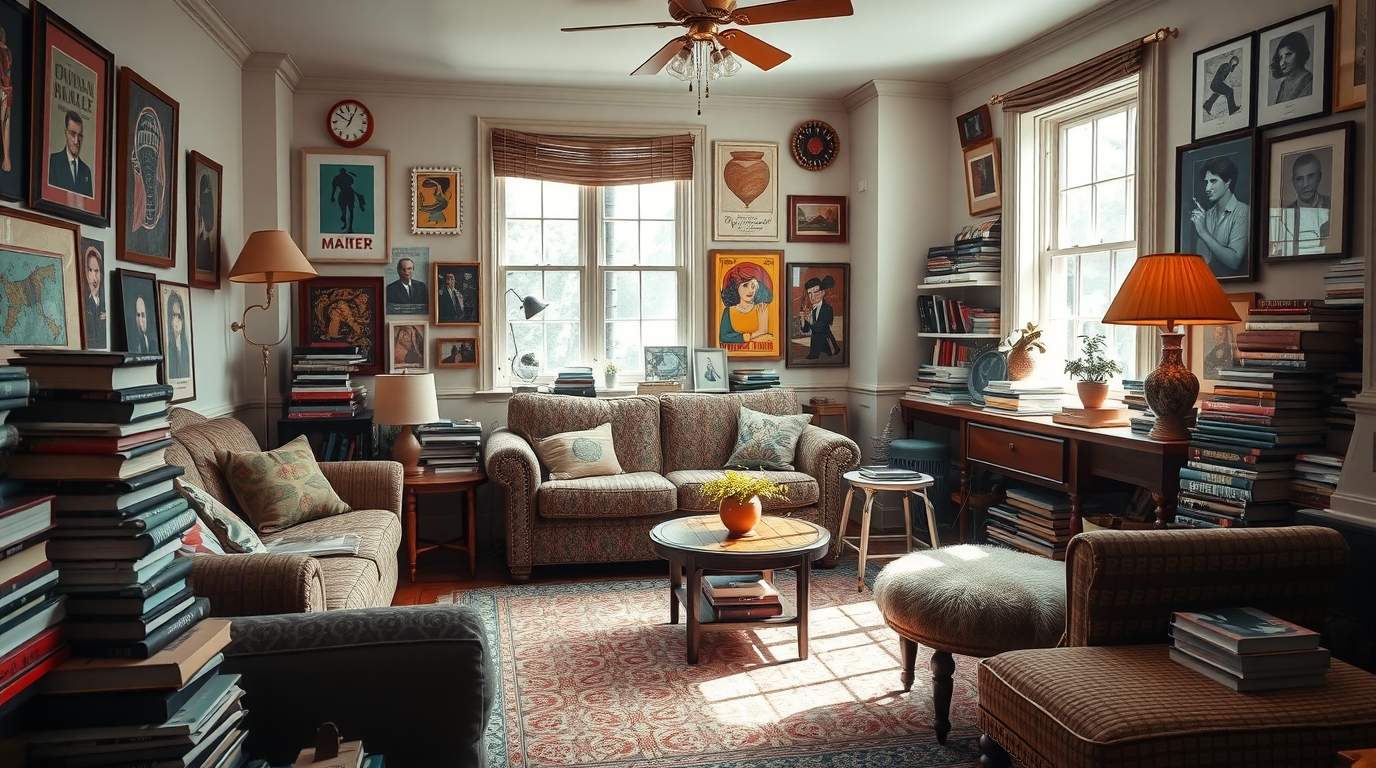When I look around my living room, nothing matches. A velvet chair from the seventies sits next to my grandmother’s wooden cabinet. The wall is a collage of old film posters, small paintings, and a crooked mirror I bought at a flea market for ten dollars. On the coffee table, mismatched mugs and stacks of books fight for space. By most design rules, this is chaos. Yet when I sit here, I feel more at home than I ever did in my old minimalist apartment. This is the power of vintage maximalism.
The movement is not about clutter for the sake of clutter. It is about filling spaces with objects that carry meaning. Minimalism asked us to strip away, to live with less, to hide our stories behind white walls. Vintage maximalism asks the opposite. It invites every layer of memory and personality into the room. The chipped lamp from your student days, the rug you dragged back from a trip abroad, the record player that belonged to your parents. Together they create a space that feels lived in, alive, and uniquely yours.
Part of the appeal is rebellion. After years of beige sofas and empty shelves promoted on social media as the ideal home, people have grown tired of perfection. A house that looks like a showroom might impress at first, but it rarely comforts. Vintage maximalism brings warmth back by mixing eras, textures, and imperfections. A scuff on a wooden table or a faded fabric pattern is not a flaw. It is a reminder of time passing and life unfolding.
Another reason for the comeback is accessibility. Not everyone can afford brand new designer furniture, especially in a time when costs are rising everywhere. Thrift shops and antique markets provide treasure hunts where one-of-a-kind pieces are waiting. A ten dollar chair with a bold pattern can transform a corner. A secondhand rug instantly changes the mood of a room. Unlike minimalism, which often hides behind expensive simplicity, maximalism thrives on affordable finds that carry character.
The trend also connects to sustainability. Every reused piece means one less item ending up in a landfill. Instead of chasing disposable decor, people are rediscovering the value of keeping and repurposing. That vintage cabinet or brass lamp is not just stylish. It is responsible. Decorating becomes both a creative act and an ecological one.
Critics say maximalism is messy, but done well it is more like music. Each object is a note, and together they create harmony. A bold rug might echo the red in a painting. A heavy oak bookshelf balances the lightness of a glass coffee table. There is rhythm even in abundance. The best maximalist rooms feel like stories told in layers, each chapter revealed as your eyes move across the space.
For guests, these homes are full of discovery. Conversations begin around the oddities on the shelf or the framed ticket from a long-ago concert. Instead of sterile beauty, there is personality. A maximalist space becomes social, not just visual. People want to linger because the room feels like it has something to say.
In truth, vintage maximalism is less a trend and more a return. Our grandparents lived surrounded by objects that carried meaning. The clean-slate minimalism of recent years was the anomaly. Now, design is circling back to something richer, more emotional. It reminds us that a home is not a photo shoot. It is a portrait of the people who live inside it.
